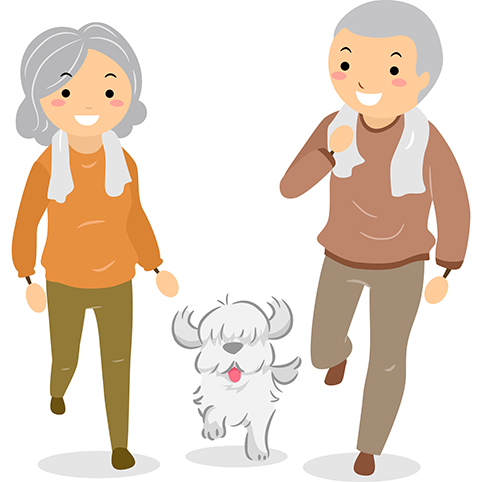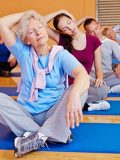
Importance of exercise. Photo: Deposit Photos
We all know that diet and fitness are keys to a healthy lifestyle. But, what might be news to some is exercise can be more effective than medications or depression counseling.
According to a recent study by the University of South Australia, exercise has even more benefits than fighting cardiovascular disease and strengthening muscles.
Researchers at the University of South Australia are calling for exercise to be a mainstay approach for managing depression as a new study shows that physical activity is 1.5 times more effective than counseling or the leading medications.
Published in the British Journal of Sports Medicine, the review is the most comprehensive to date, encompassing 97 reviews, 1039 trials, and 128,119 participants. It shows that physical activity is highly beneficial for improving symptoms of depression, anxiety, and distress.
Specifically, the review showed that exercise interventions that were 12 weeks or shorter were the most effective at reducing mental health symptoms, highlighting the speed at which physical activity can make a change.
The most significant benefits were seen among people with depression, pregnant and postpartum women, healthy individuals, and people diagnosed with HIV or kidney disease.
According to the World Health Organization, one in every eight people worldwide (970 million people) live with a mental disorder. Poor mental health costs the world economy approximately $2.5 trillion annually, a cost projected to rise to $6 trillion by 2030. In Australia, an estimated one in five people (aged 16–85) have experienced a mental disorder in the past 12 months.
Lead UniSA researcher, Dr. Ben Singh, said physical activity must be prioritized better to manage the growing cases of mental health conditions.
“Physical activity is known to help improve mental health. Yet despite the evidence, it has not been widely adopted as a first-choice treatment,” Dr. Singh said.
How Much Exercise Should You Do?
According to the Centers for Disease Control and Prevention (CDC), Adults aged 65 and older need:
- At least 150 minutes a week (for example, 30 minutes a day, 5 days a week) of moderate-intensity activity such as brisk walking. Or they need 75 minutes a week of vigorous-intensity activity such as hiking, jogging, or running.
- At least 2 days a week of activities that strengthen muscles.
- Activities to improve balance, such as standing on one foot about 3 times a week.
If chronic conditions affect your ability to meet these recommendations, be as physically active as your abilities and conditions allow.
Examples of Aerobic Physical Activity
According to the CDC, aerobic physical activity or “cardio” gets you breathing harder and your heart beating faster. From pushing a lawn mower, taking a dance class, walking or biking to the store – these types of activities and more count. As long as you’re doing aerobic physical activities at a moderate- or vigorous intensity, they count towards meeting the aerobic guideline. Even something as simple as walking is a great way to get the aerobic activity you need, as long as it’s at a moderately intense pace.
Intensity is how hard your body is working during physical activity. Try a few of these aerobic activities:
- Walking or hiking
- Some forms of yoga
- Some yard work, such as raking and pushing a lawn mower
- Bicycle riding (stationary or outdoors)
- Water aerobics
“Our review shows that physical activity interventions can significantly reduce symptoms of depression and anxiety in all clinical populations, with some groups showing even greater signs of improvement, Dr. Singh said.
“Higher intensity exercise had greater improvements for depression and anxiety, while longer durations had smaller effects when compared to short and mid-duration bursts.
“We also found that all types of physical activity and exercise were beneficial, including aerobic exercise such as walking, resistance training, Pilates, and yoga.
“Importantly, the research shows that it doesn’t take much for exercise to make a positive change to your mental health.”
Senior researcher UniSA’s Prof Carol Maher said the study is the first to evaluate the effects of all types of physical activity on depression, anxiety, and psychological distress in all adult populations.
“Examining these studies as a whole is an effective way for clinicians to easily understand the body of evidence that supports physical activity in managing mental health disorders,” Maher said.
“We hope this review will underscore the need for physical activity, including structured exercise interventions, as a mainstay approach for managing depression and anxiety.”











